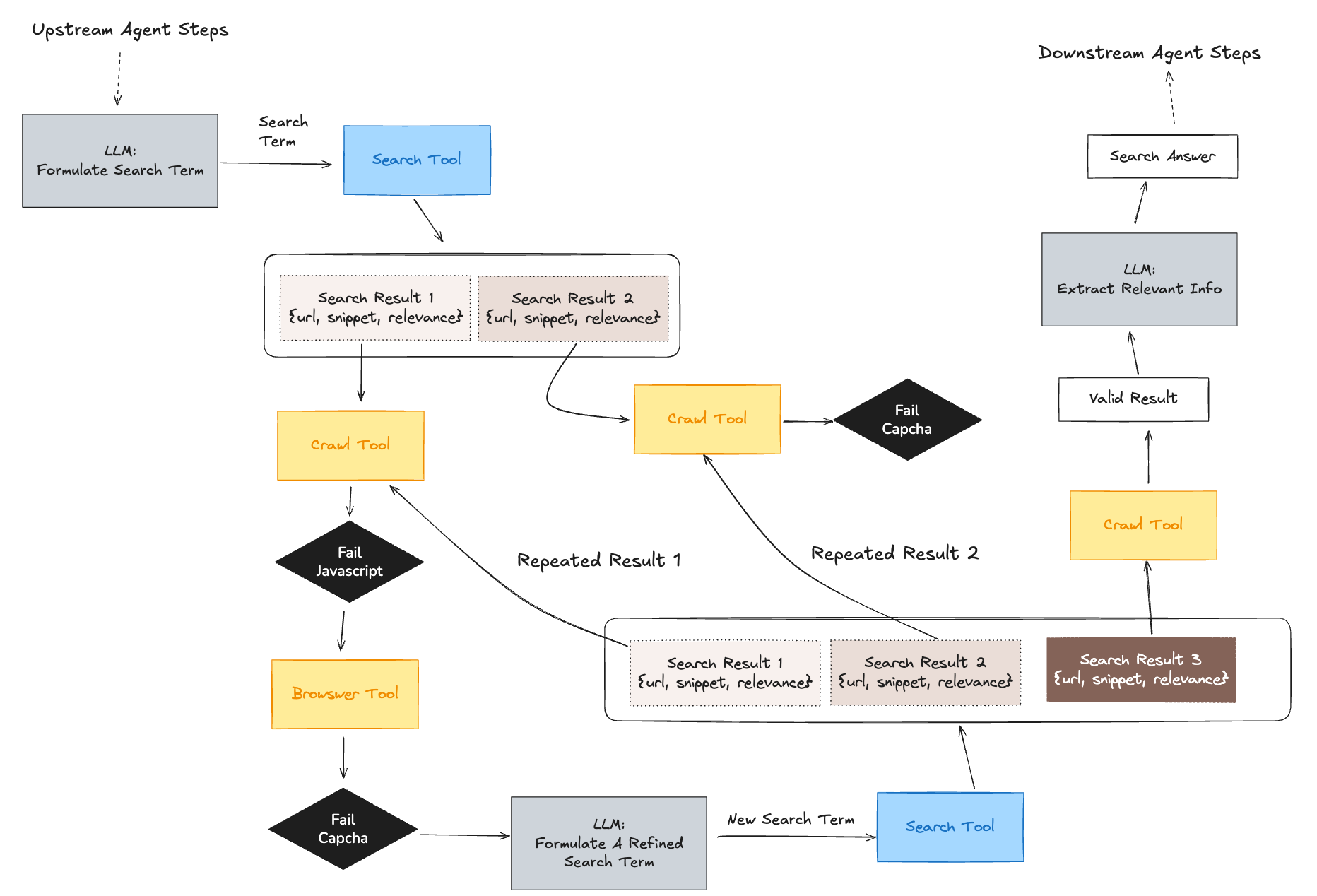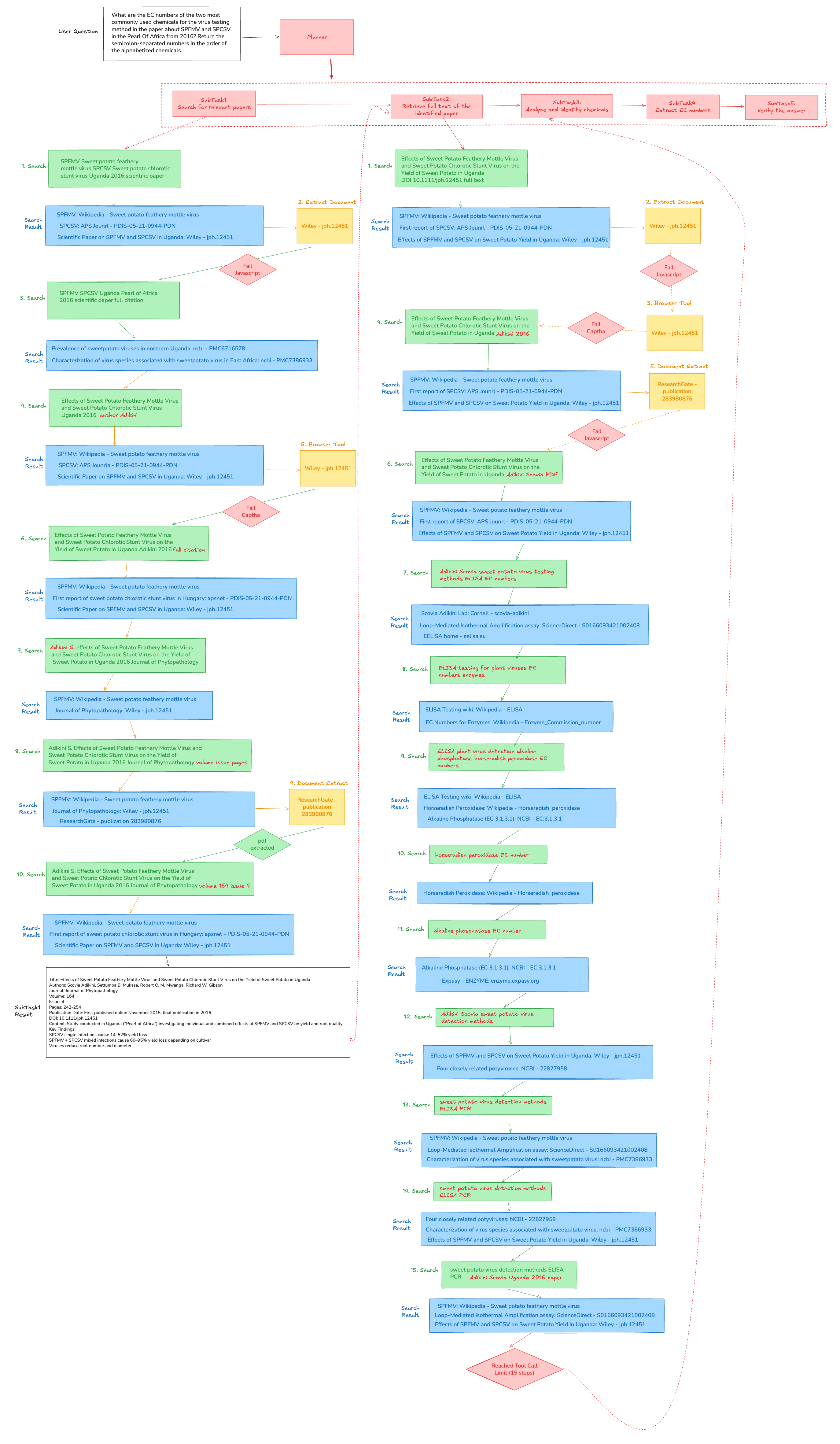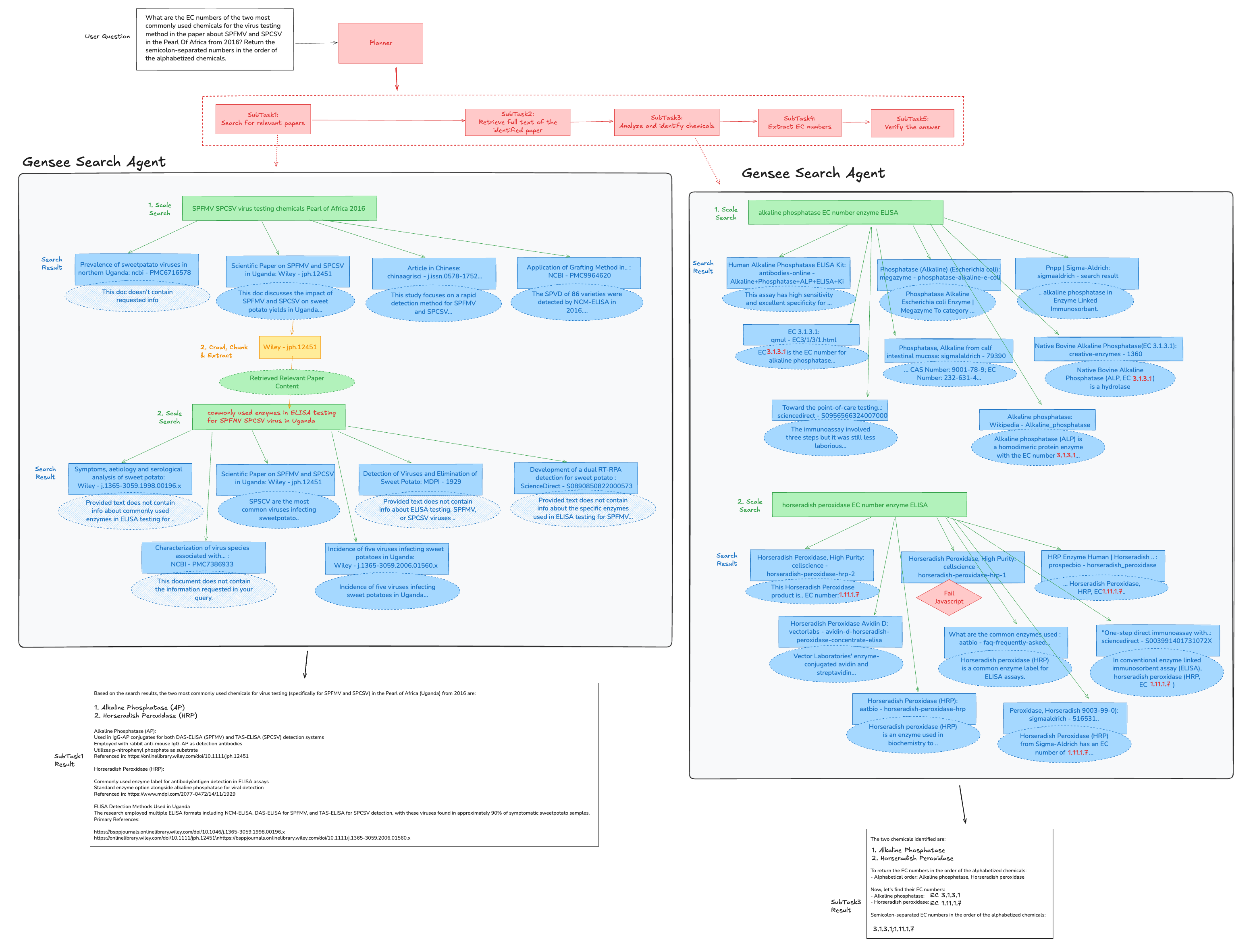Why Your AI Application Needs a Search Agent, Not a Search Tool
TL;DR
Stop wrestling with low-level search and crawl tools. Gensee provides a high-level Search Agent that handles the entire complex workflow—searching, crawling, error handling, and extraction—in a single API call. It's the difference between managing raw network packets and using a simple socket.
Higher Abstraction
Focus on your agent's core logic, not search plumbing.
Increased Reliability
Internal error handling means your agent won't stall.
Better Results
Get direct answers, not just links and snippets.
If you're building an AI agent with web access, you've probably spent more time than you'd like debugging your search tool. Your agent stalls on a bad link, a crawler fails on a JavaScript-heavy page, or an LLM call returns useless information from a snippet. This isn't just frustrating; it's a fundamental flaw in how we equip agents to access web data.
The Problem: You're Working with Raw Packets, Not Sockets
In traditional computing, you wouldn't build a web application by manually managing raw TCP packets. You'd use a high-level abstraction like a socket. Yet, in the world of AI agents, we're forcing developers to do the equivalent of packet management for web search.
Today's search "tools" are low-level. They give you a JSON file with URLs and snippets. From there, you're on your own. You have to build a complex, brittle workflow:
- Crawl the Page: Use a separate tool to fetch the full page content. What if it fails due to JavaScript? You need to add fallback logic to launch a full browser.
- Handle Failures: What if the page can't be fetched at all? You need to write code to decide whether to try the next search result or formulate a new search query entirely.
- Extract Information: If you finally get the page content, you need another LLM call to read through it and extract the information relevant to your agent's actual goal.
- Waste Resources: Often, after all that work, you find the page contained no useful information, wasting time, compute, and tokens.
This entire process is a distraction. Agent developers should be focused on their core logic—building a financial assistant or a medical research agent—not on the messy, low-level plumbing of web retrieval.
The Brittle Workflow of a Low-Level Search Tool
Developers must manually chain together multiple tools and handle numerous failure points.

The Solution: A High-Level Search Agent
Gensee is not another search tool; it's a Search Agent. It's the high-level abstraction—the socket—for web retrieval. It packages the entire complex workflow of searching, crawling, browsing, error handling, and information extraction into a single, reliable API call. You ask a question, and you get a list of text info to that question.
The Gensee Search Agent Abstraction
Gensee handles the entire complex workflow in a single, robust component.

How the Gensee Search Agent Works Internally
Gensee achieves this simplicity by handling the low-level complexity internally with a more intelligent, resilient strategy.
- Breadth-First Strategy (BFS): Instead of diving deep into the first result, Gensee investigates multiple search directions in parallel. It retrieves several promising results at once, quickly summarizing them to assess their value. This way, if one path leads to an error or a dead end, Gensee doesn't get stuck—it simply prioritizes other, more fruitful paths.
- Context-Aware Extraction: The Gensee agent takes the overall goal as context. When it scans search results, it's not just looking for keywords; it's actively looking for information that directly answers the original, high-level question.
- Intelligent Crawling: Based on the initial, context-aware summaries, Gensee decides which pages are worth a deeper look. It then crawls only the most promising sources and extracts the precise text needed to move the task forward.
A Real-World Example: Owl Answering A Level-2 GAIA Question
Let's see the difference in action. We tested the open-source agent Owl on a complex GAIA benchmark question, first with its native low-level search tool, and then with Gensee.
The Question: ‘What are the EC numbers of the two most commonly used chemicals for the virus testing method in the paper about SPFMV and SPCSV in the Pearl Of Africa from 2016? Return them in alphabetical order, separated by a semicolon.’
Using its default tool, Owl's agent got stuck in the complex workflow shown in the first diagram. It spent 10 steps repeatedly trying and failing to retrieve a single article. It timed out after 15 steps and failed the task after more than 7 minutes.
With a single call to the Gensee Search Agent, the agent got the answer directly. Gensee handled all the internal complexity.
As a result, the Gensee-powered Owl found the correct answer 3.1.3.1;1.11.1.7 in under 3 minutes.
The result?
The Gensee search agent improves the GAIA benchmark accuracy for Owl by 23%!
A Search API Comparison
We tested the same query ("Microsoft Dynamics 365 official pricing") with different search toolings and compared the responses. Here is what we found:
| Bullet Point | TAVILY | EXA | Gensee | |
|---|---|---|---|---|
| Direct Sales Pricing (numbers & tiers) | Incomplete info (mentions "plans," no numbers) | Complete info (lists Professional £65, Enterprise £105, etc.) | Incomplete info (general overview page, no pricing details extracted) | Complete info (lists editions with pricing & features) |
| Edition Differentiation (Pro, Enterprise, etc.) | Incomplete info (mentions "plans," but not broken down) | Complete info (Professional vs Enterprise tiers) | No info (just overview text) | Complete info (Professional, Enterprise, Premium with features) |
| Free Trial / Free Plan Mention | Incomplete info (mentions "Try for free") | No info | Incomplete info ("Shape the future…" generic) | Complete info (explicit edition features + trial context) |
| Features per Edition | No info | Incomplete info (only high-level mention of Copilot) | No info | Complete info (detailed feature breakdown per edition) |
| Official Documentation / Learn Links | Complete info (links to Microsoft Learn docs) | No info | No info | Incomplete info (summarized content, not direct doc links) |
| Overall Detail Quality | Broad, generic, lacks pricing depth | Strong numeric + edition coverage, but limited features | Generic landing page content, noisy | Most structured & complete summary (pricing + features) |
Your AI Agent Is Only as Good as Its Tools
The lesson is clear: an agent's performance isn't just about the power of its LLM. The quality and abstraction level of its tools are just as important. Wrestling with low-level tools cripples even the most advanced reasoning engine.
Gensee provides the high-level search agent you need, handling the messy details so you can focus on building great agents.
Ship agents that don’t stall on bad links—and return better answers faster. Now offering $10 free monthly credits to new registered users.
Get Started with Gensee SearchFor Curious Readers: Detailed Execution Traces
For those who want to see the raw output, here are the full execution traces for the GAIA question, comparing the original Owl agent with the Gensee-powered agent.
Owl's Original Search Trace
Notice the repeated, failing attempts to retrieve the same information before the agent eventually times out.

Owl with Gensee Search
In contrast, with Gensee search, Owl gets the relevant information for the first subtask, doesn't even need the second subtask, and get the correct answer after the third subtask.
